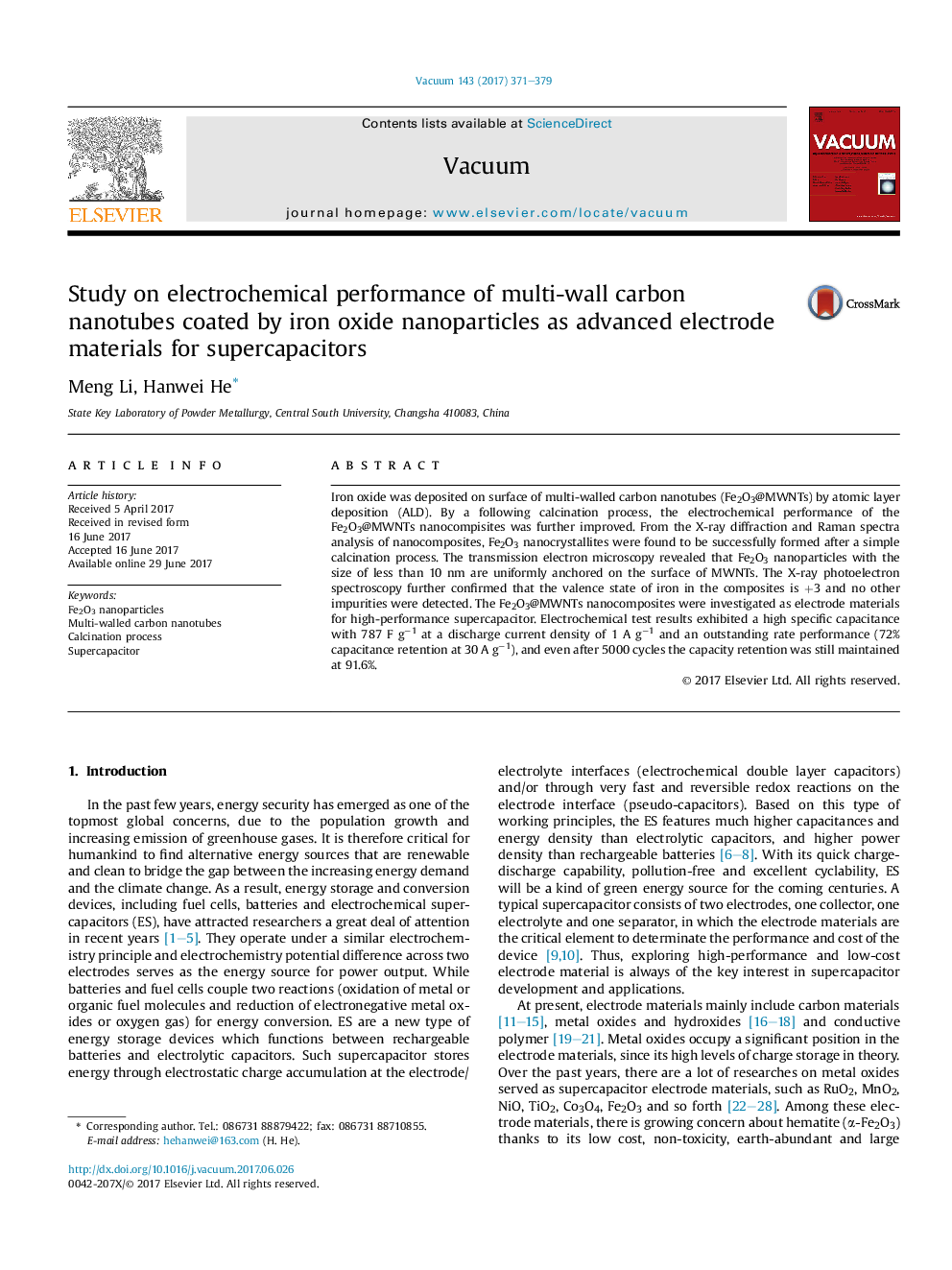| Article ID | Journal | Published Year | Pages | File Type |
|---|---|---|---|---|
| 5468140 | Vacuum | 2017 | 9 Pages |
â¢Fe2O3 was deposited on multi-walled carbon nanotubes by atomic layer deposition.â¢Fe2O3 nanocrystallites with particle size less than 10 nm were formed by a simple calcination process.â¢Overall electrochemical performances of the Fe2O3@MWNTs composites are dependent on the Fe2O3 loading.â¢The specific capacitance is 787 F gâ1 at 1 A gâ1, and the capacitance retention is 91.6% after 5000 cycles.
Iron oxide was deposited on surface of multi-walled carbon nanotubes (Fe2O3@MWNTs) by atomic layer deposition (ALD). By a following calcination process, the electrochemical performance of the Fe2O3@MWNTs nanocompisites was further improved. From the X-ray diffraction and Raman spectra analysis of nanocomposites, Fe2O3 nanocrystallites were found to be successfully formed after a simple calcination process. The transmission electron microscopy revealed that Fe2O3 nanoparticles with the size of less than 10 nm are uniformly anchored on the surface of MWNTs. The X-ray photoelectron spectroscopy further confirmed that the valence state of iron in the composites is +3 and no other impurities were detected. The Fe2O3@MWNTs nanocomposites were investigated as electrode materials for high-performance supercapacitor. Electrochemical test results exhibited a high specific capacitance with 787 F gâ1 at a discharge current density of 1 A gâ1 and an outstanding rate performance (72% capacitance retention at 30 A gâ1), and even after 5000 cycles the capacity retention was still maintained at 91.6%.
